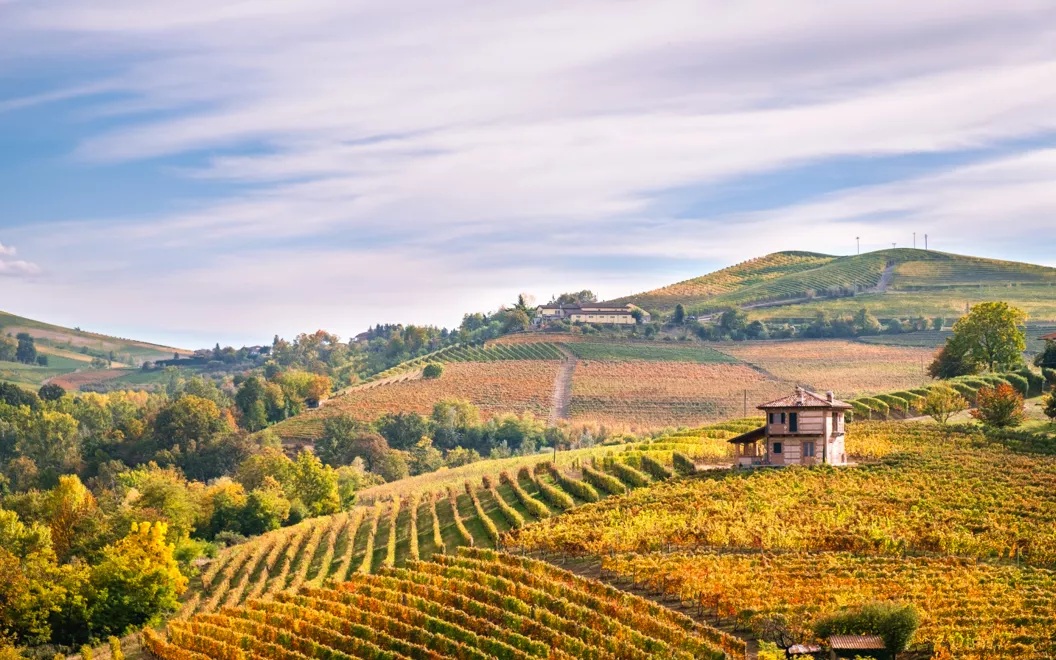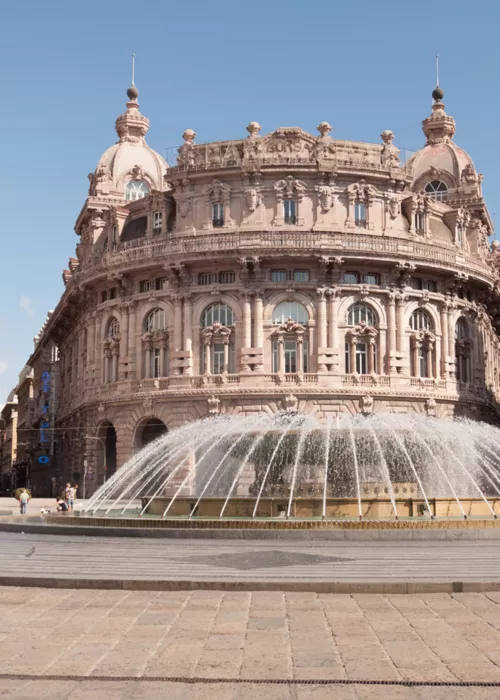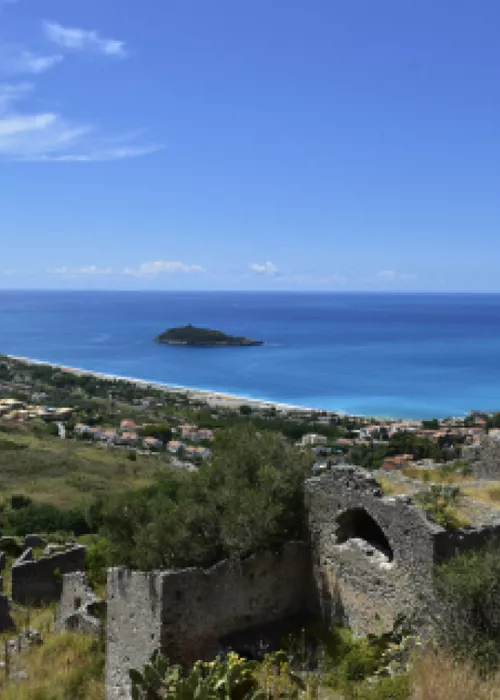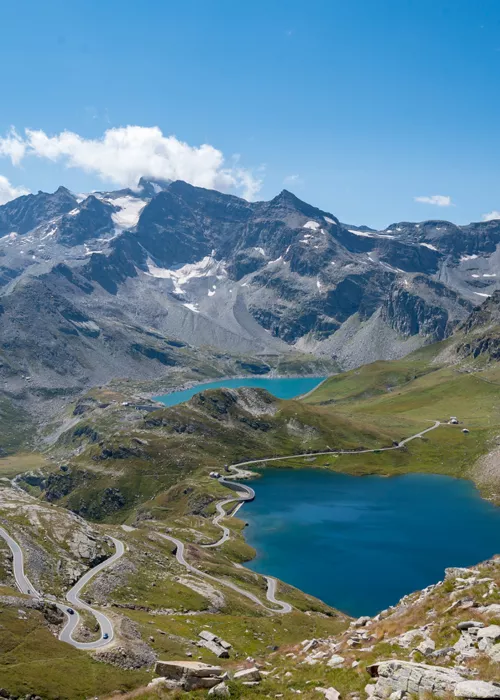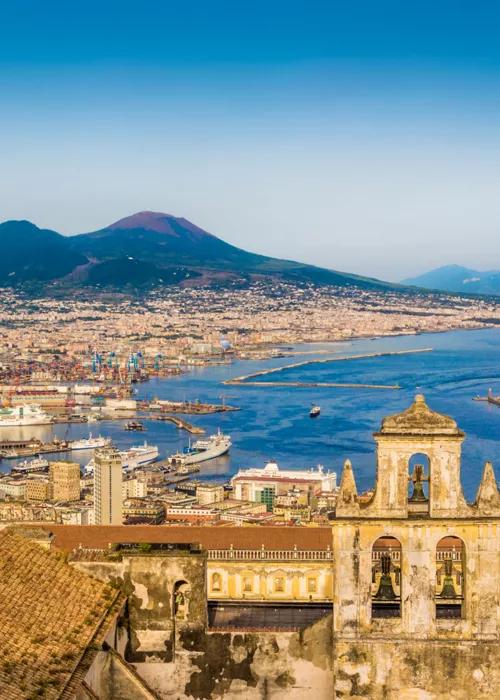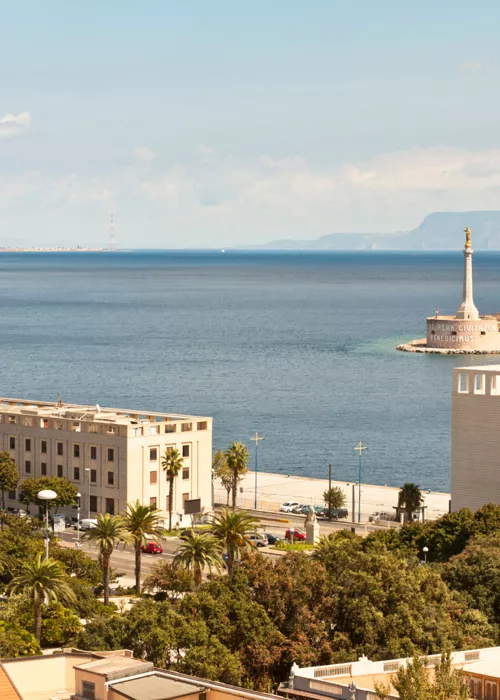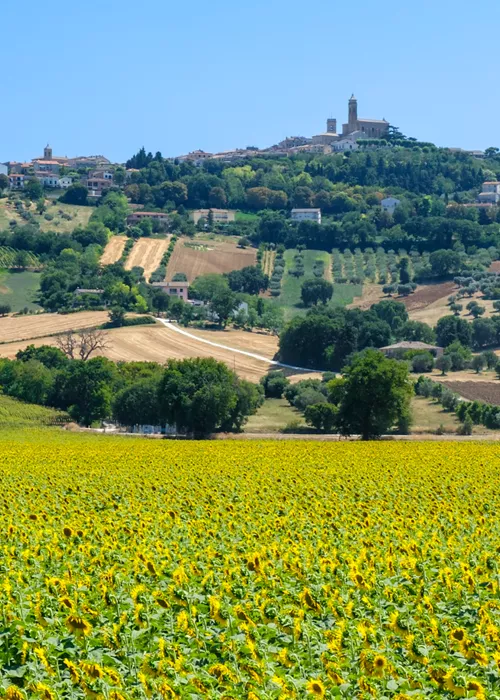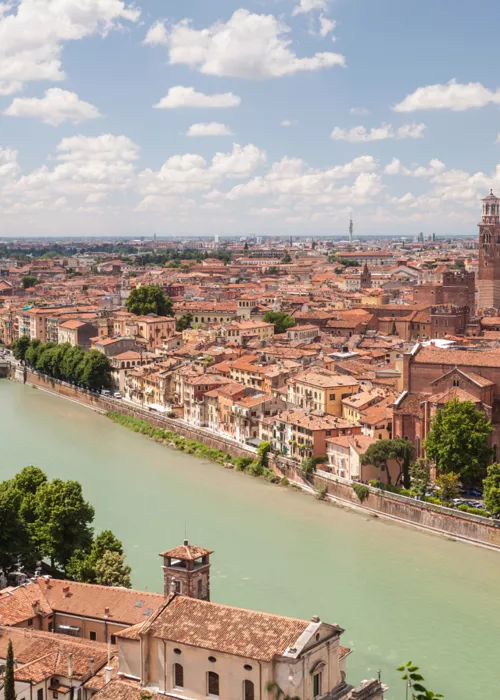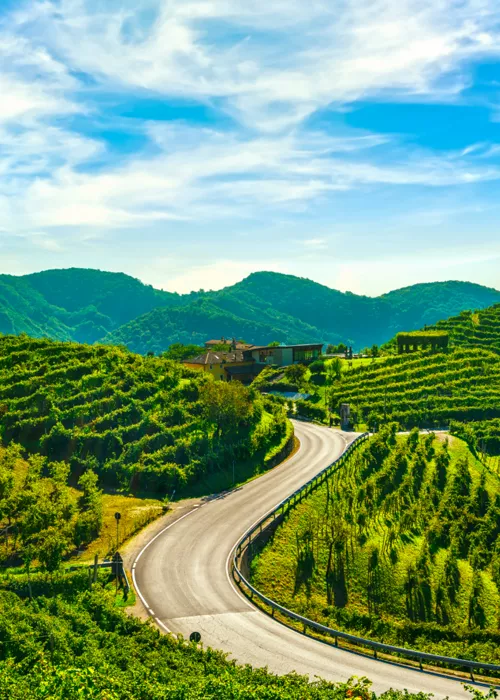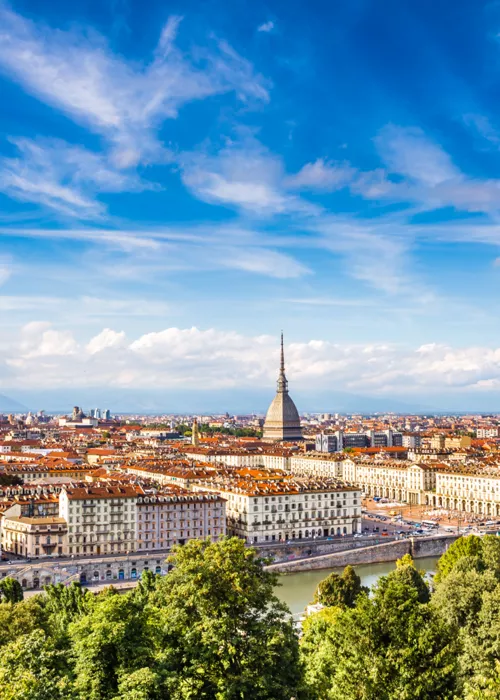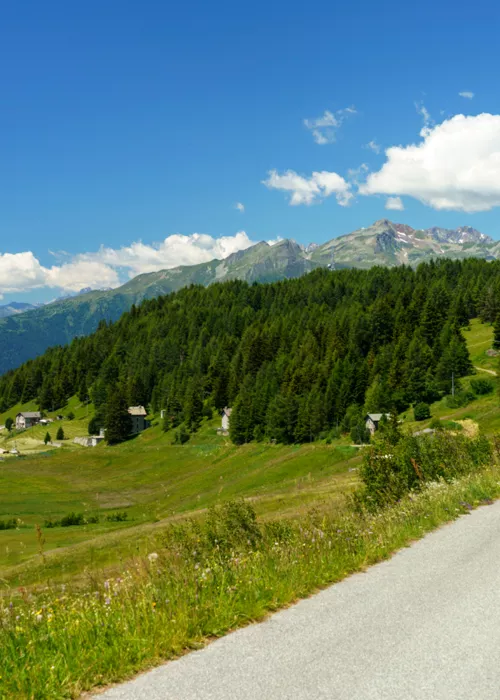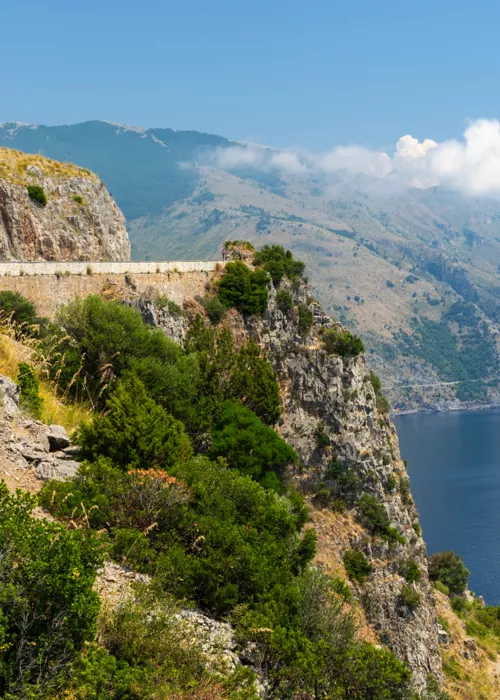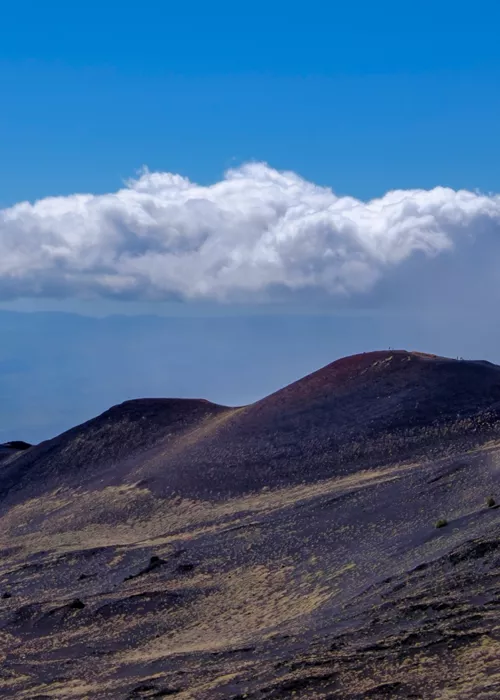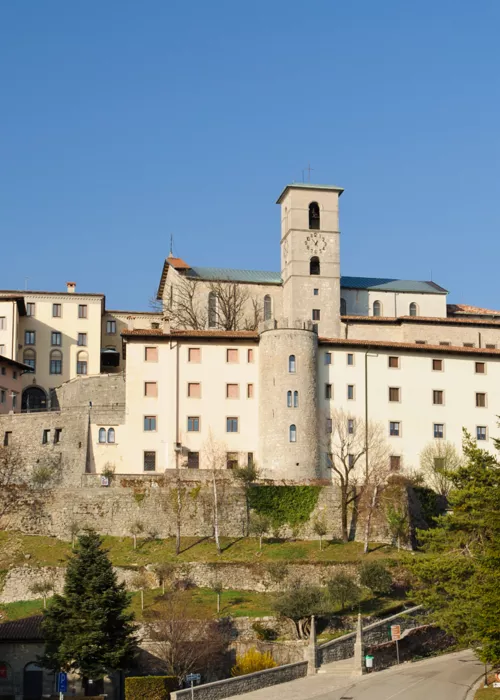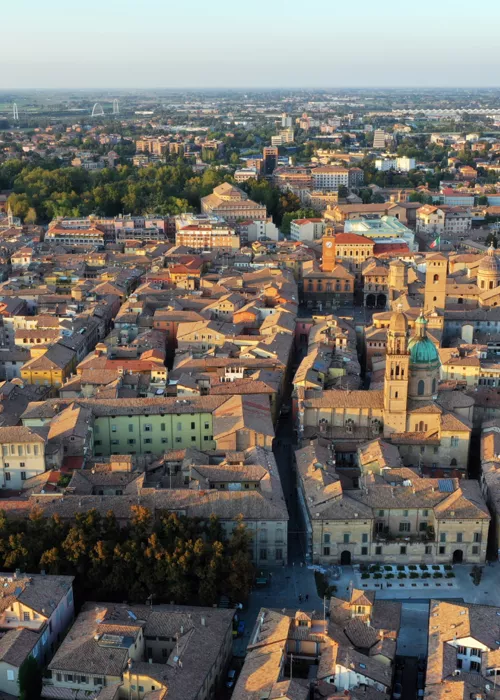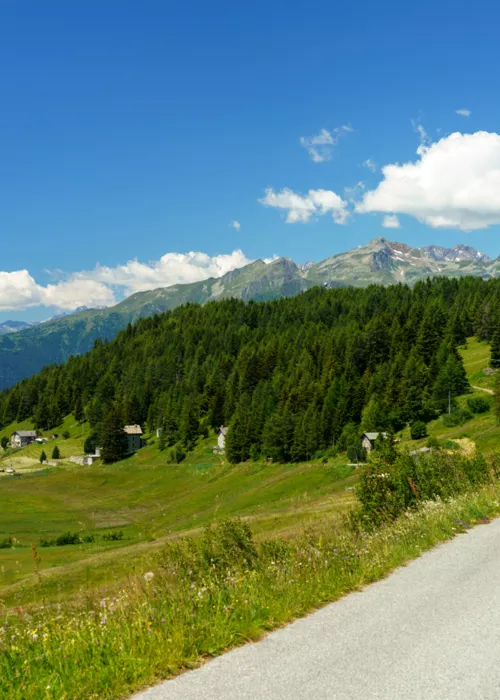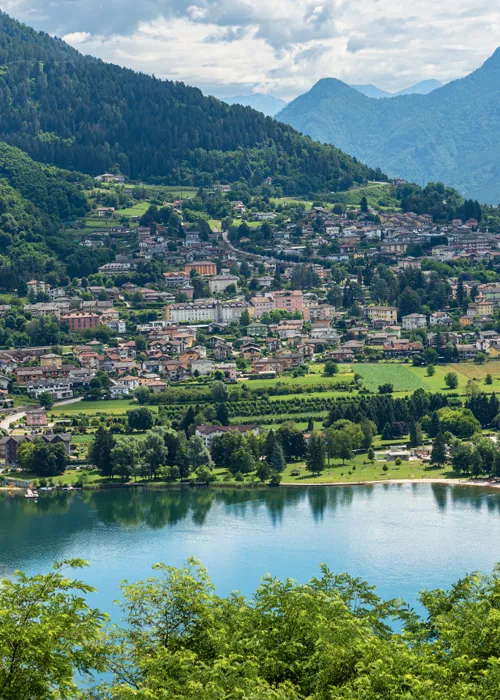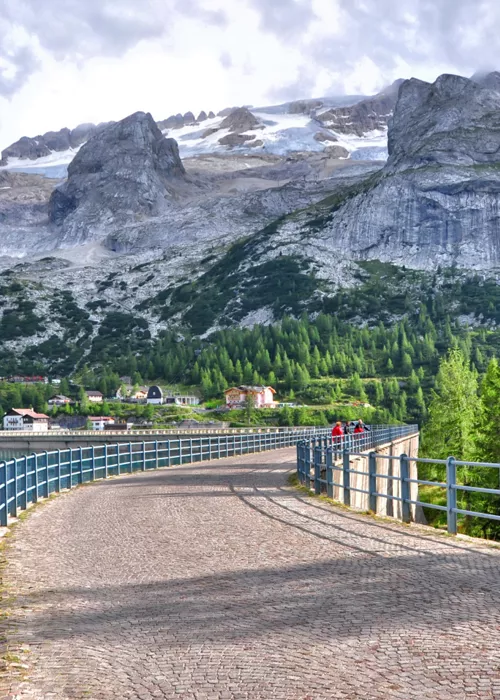Sanremo, a terrace overlooking the sea

Sanremo is the city of flowers, of songs, of dives into the sea, but not only. Few people know that this renowned tourist resort has a medieval heart to be discovered, before kicking off on the cycling route: la Pigna. Where does this name come from? From the labyrinth of alleys, stairways, arches, and covered passageways that are arranged in concentric rings around the centre of the old town, founded around the year 1000. At the top are the Giardini Regina Elena, with the Santuario Madonna della Costa, a church with a Latin cross plan and a delightful Baroque façade. It is a special place from which to relish a unique view of the blue Tyrrhenian Sea. Having descended to the coast, it is time to put your hands on the handlebars for an uncomplicated initial stretch. You ride along the coast, passing through Arma di Taggia, San Lorenzo a Mare and finally Imperia. At this point, however, it is time to leave the sea behind.

The turn towards the inland requires a change of pace. The route begins to climb towards the Colle di Nava, the pass between the Ligurian Alps that joins Liguria to Piedmont. Make a note of this name: Pieve di Teco. It is the medieval village that marks where the climb begins in earnest. To reach the pass, you need to pedal for 11 kilometres, facing an average gradient of 7 percent. It is a stretch that risks putting the least trained lungs at risk, but the effort is rewarded by clearing the summit, amidst the lavender fields that from the end of June to mid-August explode with lilac. Isn’t it the blooming period? Something else makes this place special: the Napoleon Forts, a system of fortifications built in the 19th century by the Savoy sovereigns. The Central Fort, atop the hill, is in perfect condition with its two drawbridges and the trench connected to the moat. The rest of the route winds along a plateau dotted with charming villages. Where can you stop for an aperitif at the end of the day? Garessio, one of the most beautiful villages in Italy: its Piazzetta San Giovanni looks like an open-air lounge.
Mondovì and Cuneo, higher and higher

The last stop not to be missed before the finish is Mondovì, famous among other things for its hot-air balloons. After so many kilometres in the saddle, the pit-stop option in the clouds is inviting, isn’t it? If you prefer flying high, but keeping your feet on the ground, take the funicular designed by Giorgetto Giugiaro: in 10 minutes you will reach the very elegant Piazza neighbourhood, the oldest in the city, with its narrow streets and historic shops. A few minutes’ walk and you are in the Belvedere Garden: from here you can extend your gaze over the Langhe and the Alpine arc. If you head south-east, a marvel appears before you that is worth a small detour from the itinerary. About 5 kilometres from Mondovì is the Sanctuary of the Nativity of Vicoforte, a Baroque monument boasting the world’s largest elliptical dome. Again, don’t be content with looking at it from the ground and climb the spiral staircase up to its height of 60 metres. Then, head straight for Cuneo, the provincial capital built on a rocky spur nestled between the Stura river and the Gesso stream. The road is slightly uphill, but not particularly testing. Be careful of the cobblestones in the historic centre, which can be treacherous for two-wheelers, but once you arrive at your destination take some time to relax. Cuneo is the classic Savoy city that at first glance appears austere, but then wins you over. Here, too, aim high: climb up to the 52-metre-high Torre Civica and gaze out over the Alpine arc. Are you sure you want to come back down?

